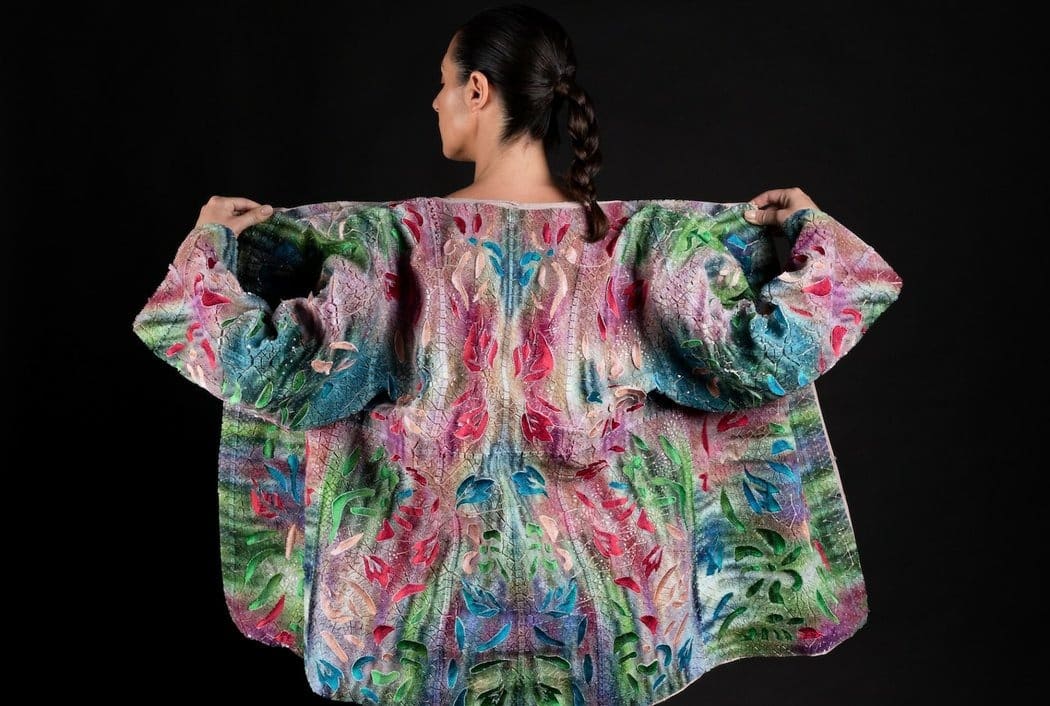Stratasys worked with fashion designers Julia Koerner and Ganit Goldstein to produce dresses and kimonos with 3D printed parts.
Koerner and Goldstein’s work forms part of Re-FREAM (a collaborative research project funded by the European Union), which uses Stratasys’ PolyJet 3D printing technology. Stratasys has previously worked with companies such as threeASFOUR to develop items to be exhibited at New York Fashion Week, and collaborated with Koerner and Goldstein to “optimize its PolyJet technology to meet the needs of modern clothing” and “make customized fashion The design is commercially viable”. ”
Enabling custom fashion design is the driving force of Goldstein. He spent a year in Japan learning interweaving and mastering Asian handicraft embroidery and textile painting. The final kimono design follows the Japanese “ikat” dyeing method, that is, the yarn is tightly wrapped and dyed continuously until the desired pattern is formed, and then additional materials are added through direct textile 3D printing to create a uniquely designed garment. It is said that using textiles as the “skeleton” of clothing is the first of 3D printing fashion, but according to Goldstein, this is not the last step.
“Looking at the fashion world today, I want to introduce a new way of manufacturing, moving aware from mass production to customized design,” commented Goldstein. “3D printing has always offered the potential to personalize design in ways not possible before, but to truly create a new way to manufacture requires a new kind of textile. My goal is to create a new hybrid world of crafts and multi-color 3D printing, connecting past, new and future techniques to evolve fashion design.
“In fashion, it’s important that we continually optimise and evolve to introduce new design forms. During the past year, I experimented with numerous different fabrics and technologies to incorporate 3D printing within textiles. Achieving this milestone takes us away from 2D design and opens up a world of wearable 3D garments.”

Koerner also wants to break the boundaries of modern fashion design. His ARID series was unveiled at the virtual ARS electronic art festival. These works are produced on the basis of research on the digital processing of natural inspired geometric shapes from 2D to 3D and the adaptability of textiles with multi-color 3D printed parts. This research led to the production of 38 different 3D printed parts that were combined to form a dress. Similarly, Stratasys’ PolyJet technology is used to print directly on the fabric, while Koerner chooses bright colors to create a flickering effect when the garment moves.
It is said that the modified 3D printed connector obtained from the wearer’s 3D scan can achieve personalized size without sewing, while the 3D printed joinery can be used to help assemble the final piece.

